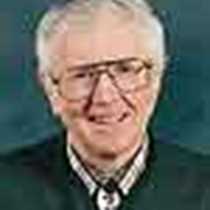A yellow school bus met Sea Bird guests at our Zodiac landing. Within 20 minutes we were on top of the plateau, at a park overlook where Palouse Falls spills 185 feet into a foaming punchbowl. Spray wets the black basalt walls and supports a green band of mosses and ferns.
The entry to this grand overlook is a small state park, now pungent with flowering black locust trees and honey suckle bushes and, brightest of all, a massive bush of yellow roses. In their turn the park lilacs will soon bloom.
These are not trees or shrubs native to the West, but they have a story to tell of the woman's touch. Locust, lilac and yellow rose were among the few that would grow and flower with minimal nurturing in this arid landscape. The trees gave shade and the bushes provided color and scent, a touch of "back home" for women who came west with their men to take up donation land claims and develop wheat and livestock ranches. Most of these plants came as cuttings carried in the wagon boxes and watered at the camp stops.
Many of these earlier ranches were consolidated into larger ones. Old homestead ites tumbled and vanished, but the rose, lilac and locust still tell of families past and their struggles and dreams in this lonely wide-open land in the southeast corner of Washington.
The park was a gift to the public from descendents of these settlers, including McGregor Land & Livestock Co. and Agnes Sell of Washtunca, Washington. It still has residents drawn by this green oasis as they migrate over this vastness of range and winter wheat land. They drop from the skyway to rest and feed briefly. Today it was flocks of yellow-throated and Wilson's warblers and a hermit thrush.
Recently arrived nesting residents of the park oasis were three battling pairs of Western kingbirds settling nesting boundaries, an Eastern kingbird and glowing bright Baltimore oriole.




